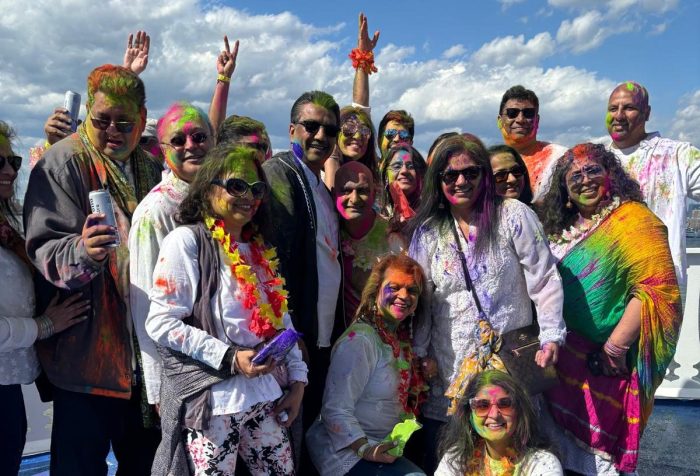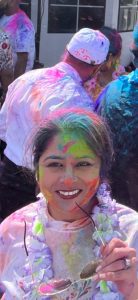Holi on Long Island, a colorful tradition

By Sabrina Artusa
As spring brings blue skies, blooming flowers of violets and yellows and flourishing green vegetation, Indian Americans look forward to Holi — the festival of colors — which falls on the first full moon in the Hindu month of Phalguna.

The holiday celebrates the coming of spring and the overall triumph of good, love and light over darkness and evil. On the day of the full moon, March 14 of this year, people in India play in the street, coloring each other’s faces with powder and water; children throw water balloons, sometimes at strangers, all in the good fun and light-hearted troublemaking of the holiday.
“Holi Hai” is the predominant saying, meaning It’s Holi. In India, neighborhoods celebrate the holiday, drinking, eating fried pastries and throwing colored powder. Here, on Long Island, celebrations are more intimate.
“Over in India, everybody in every neighborhood is celebrating,“ said Arvind Vora, who moved to Long Island 55 years ago at the age of 24. “There was no need to travel or make all sorts of arrangements/planning.”
When he arrived, he wrote in an email, there were hardly 10 families that celebrated in the area. By the mid-1970s, he said, he started celebrating again to bring the cheer of the holiday to the children of the family.
Indu Kaur, owner of the Curry Club at SaGhar in Port Jefferson and the Meadow Club in Port Jefferson Station, has hosted these gatherings in the past, treating friends and family to “gujiya,” a deep-fried pastry and plenty of color.
“Holi in India is an all-encompassing celebration — it’s loud, vibrant and spills onto the streets with massive crowds throwing colors, dancing to dhol beats and sharing sweets with neighbors, friends, and even strangers,” Kaur said. “While the essence of joy and color remains the same [on Long Island], the scale is usually smaller, and people are mindful of space, weather and local regulations.”
Baldeep Singh, a friend of Kaur’s, was invited to one of Kaur’s “all-out” Holi celebrations. He also lived in India for 10 years. While whole neighborhoods get involved in the celebration like a “huge party,” Singh said that he enjoyed celebrating with friends and family.
“Everyone’s in a great mood, everyone’s happy,” he said. “It is a representation of spring when flowers are in bloom. Everything is starting afresh and everyone is together having a great time. It is a lot of people really just living it up and being grateful.”
Generally, people use organic, biodegradable materials for the colors, but some people use permanent colors that won’t come off easily. Singh remembers going to work after Holi, and some people showed up with purple faces and skin sore from scrubbing, although “no one really judges you.”

“Holi reminds us to embrace playfulness, throw colors at each other, laugh out loud, indulge in sweets, dance freely and bond with family. It’s a time to heal our souls, connect with loved ones and share pure happiness,” Kaur said.
Holi has two different mythological origins. According to one legend that is central to the celebration of Holi in Barsana and Mathura, the mischievous Krishna fell in love with Radha, a fair-skinned milk maid. Self-conscious about his darker skin, he applied colors to Radha’s face. Today, their love story is re-created in some areas of India and honored through Holi.
For larger celebrations comparable to those in India, some people travel either to New York City or even down south to Georgia.
“It would be fun if the U.S. starts recognizing Holi,” Singh said. “I could really see a lot of people just having fun.”
Non-Hindus in India celebrate the holiday as well, including Vora, who said he celebrates in the same way non-Christians celebrate Christmas.
This Holi, Kaur will dress in a white Indian outfit with a colorful scarf, known as a dupatta, Punjabi jutti shoes and silver earrings. Together with her friends and family, she will usher in the new season “dancing freely, throwing colors and indulging in sweets, bringing a rare sense of carefree happiness.”






